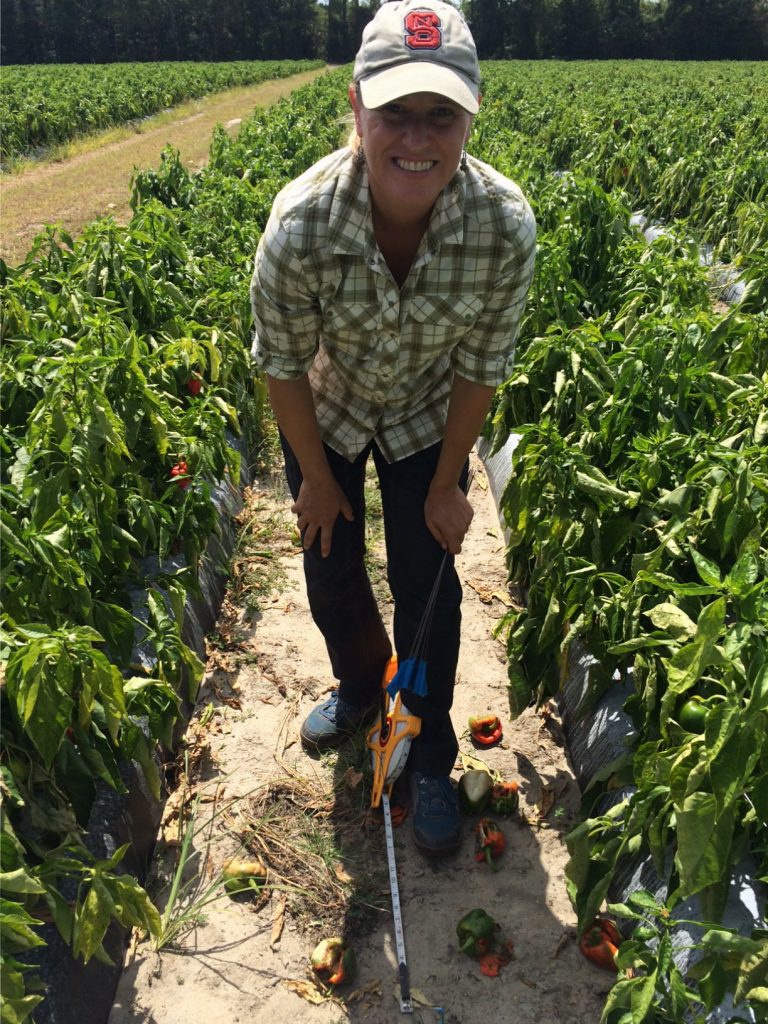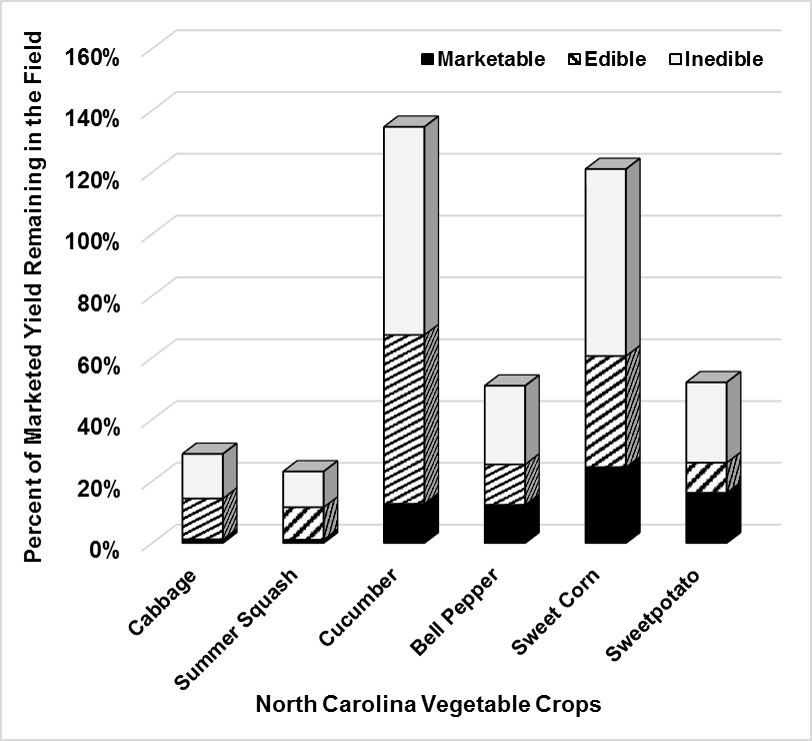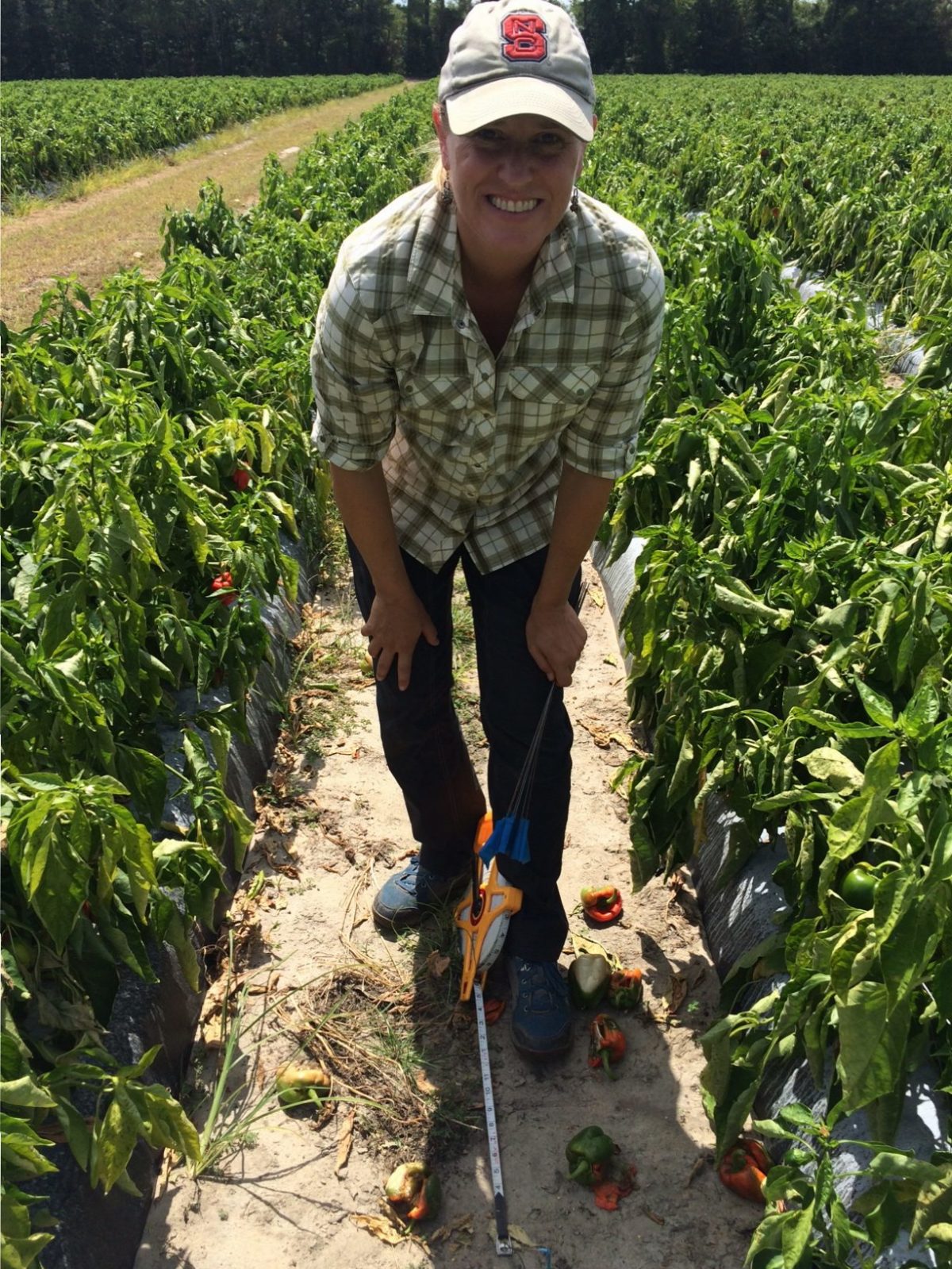By Lisa Johnson and Rebecca Dunning

Nobody likes to be wasteful, but if it’s costlier to save something than to throw it away, a business owner is going to head for the garbage can. For fruit and vegetable growers, chemical destruction and tilling under are oft-used options near the tail end of a harvest. These practices occur even when product is still visible in the field, if the cost of harvesting and packaging is more than the sale price of the product.
New information from North Carolina State University, presented by researchers at the Southeast Regional Fruit & Vegetable Conference in January, reveals greater volumes left in the field than previously assumed. Coupled with emerging market channels for surplus and second-tier product, growers may want to reconsider their harvest decisions next time they think a field is played out.
Field losses at the end of the season can be attributed to several factors. Losses can result from demand dropping off unexpectedly, a price less than the harvest cost, reduction in quality in the field, risk of rejection of loads, and competing priorities on the farm. Since there have been so many advances in specialty crop production resulting in higher yields, the result can be a surplus when demand is low, or large volumes of products that do not meet buyer specifications.
MORE
ACCURATE MEASUREMENTS
Accurate
measurement of remaining produce is the first step to preventing excess field
loss. If there are large surpluses without a market, less acreage can be
planted and maintained, increasing savings. If there are huge volumes of
lower-quality product, then marketing that volume can lead to increased profit.
In the North Carolina study, among growers managing vegetable production of a median 1,075 acres, a volume equivalent to 42 percent of the crop already harvested and sold was left unharvested in the field. This 42 percent was comprised of 16 percent that was marketable — suitable to sell into No. 1 grade markets. The remaining 26 percent was edible — product that would not grade as No. 1 due to size, color or surface scarring.

Field sampling is very similar to determining yield potential and has only a few steps. Sample rows are randomly selected in a field after the harvest has ended, and equal lengths are measured and marked. Everything from the plants is harvested and sorted into three broad categories: 1) marketable, 2) edible but unmarketable and 3) inedible or unfit for consumption. Samples are weighed and recorded, and then the remaining crop in the field is calculated from the samples. An Extension bulletin and videos are available that show sampling and calculations. When the remaining crop is calculated, strategy for sale can be developed.
WHAT’S
IT WORTH?
In
the United States, new trends in consumption have led to emerging markets for
fresh produce, and misshapen or blemished produce has found a new home in
subscription box services that deliver to homes. These companies, as well as a
few national “ugly produce” retail programs, typically pay growers 50 percent
of the wholesale price of No. 1 products.
Using the marketable and edible amounts of a selection of crops found unharvested in the field, along with prices provided by the North Carolina Department of Agriculture & Consumer Services, an analysis of the value of the unharvested crop was made. Several scenarios for sale of the remaining crop are possible, with each dependent on the assumption that demand exists and that market prices are unaffected by the increase in volume sold. Under these assumptions, four possible scenarios can move the crop off the farm:
- The crop can be completely harvested, sorted and packed into field bins, for sale into an alternative market (e.g., subscription box program), which pays 50 percent of wholesale.
- The crop can be harvested completely and packed in the field into bins, skipping sorting and washing, and sold into the emergency food bank system at $0.07/pound.
- The crop can be entirely harvested and sorted in the packinghouse. The marketable portion is packed into cartons for regular sale into the wholesale market, and the edible portion is packed into bins for 50 percent of the wholesale price.
- The crop can be entirely harvested and brought into the packinghouse and sorted. The marketable portion is packed into cartons for regular sale into the wholesale market, and the edible portion is packed into bins for $0.07/pound for sale to the food bank.
Based on North Carolina market conditions in 2017, and volumes of marketable and edible produce found in the researchers’ field measurements, Scenario 3 above offered returns per acre on the remaining crop of $1,059 for bell pepper, $1,135 for cucumber and $515 for sweet potato. If there is wholesale demand for the crop toward the end of the season, and the grower is connected to an alternative market offering 50 percent for edible but unmarketable quality, this scenario offers the best possibility for profit.
For more information on this North Carolina State University project, Whole Crop Harvest, see https://cefs.ncsu.edu/food-system-initiatives/whole-crop-harvest/.
Lisa Johnson is a senior research scholar; Rebecca Dunning is a research assistant professor — both in the Department of Horticultural Science at North Carolina State University.
This article was featured in the April issue of VSCNews magazine. To receive future issues of VSCNews magazine, click here.
Share this Post










